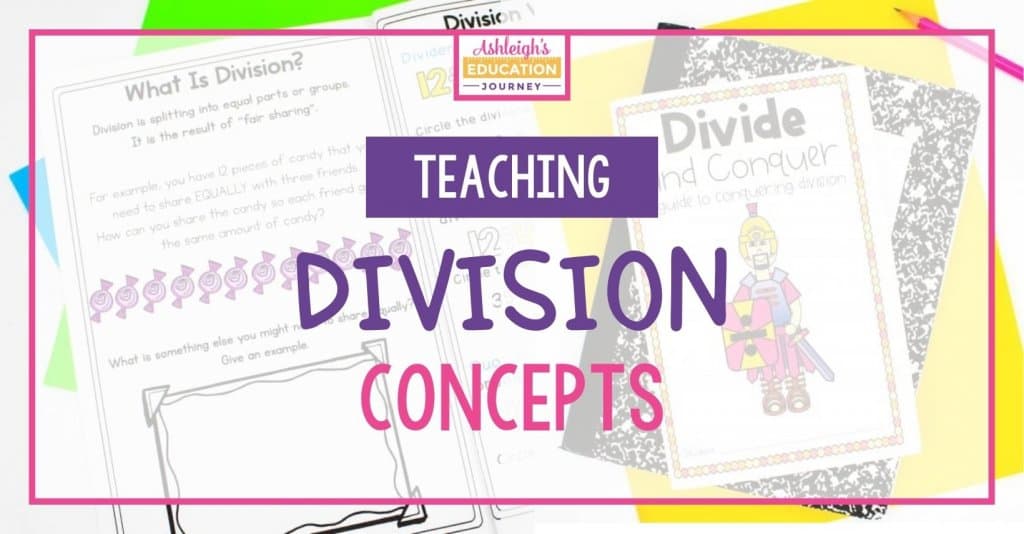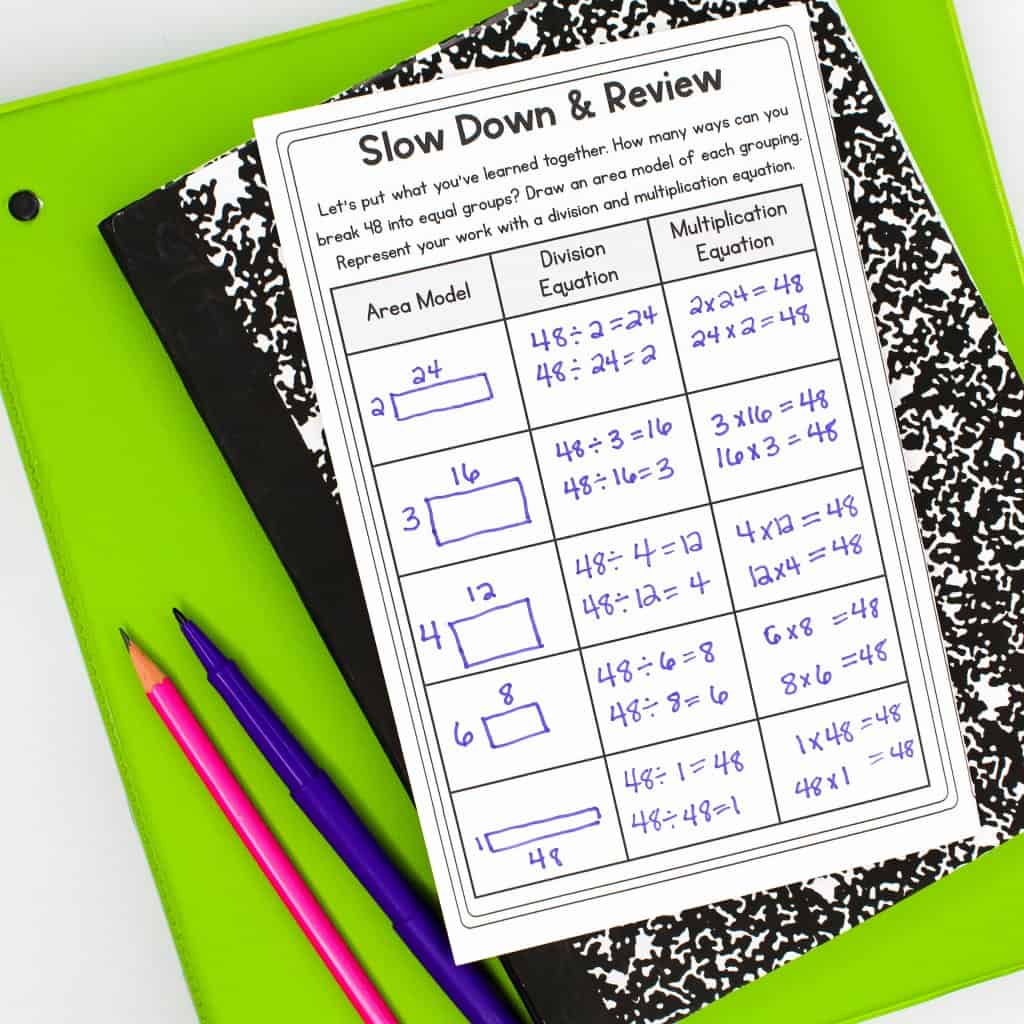
It’s important to spend time teaching or reviewing division strategies before moving on to multi-digit division. Most students are fairly confident and solid with multiplication concepts. But, many students need a little review of division strategies before moving into multi-digit division.
I created a Conquering Division booklet that I used to guide our review of division strategies, and it was a huge help! I let my students pace the review, so some concepts we moved through quickly and we spent a little more time on others.

I begin by teaching/reviewing what division is. Students learn that division is splitting into equal parts or groups and is the result of fair sharing. Students then give examples of what they might need share equally.

Then, students learn/review division vocabulary. Throughout the remaining lessons, of the booklet and division unit, I try to ensure that we all use correct vocabulary. The page has students circle different components of a division equation.

Teaching Division Strategies
When I ask students what division is, I often hear “it’s the opposite of multiplication”. However, when pushing students to explain what that means I find that a few students still need to “see” the relationship. On this page students use grouping models to solve and write multiplication and division equations.

This first set of pages are typically easy for most students. Once I get to arrays as a division strategy, things tend to become more complicated for students. Begin by reviewing division and arrays by having students write a multiplication and division equation to represent arrays. This helps students to continue to develop their understanding of division and arrays.

After reviewing arrays, transition students into solving division problems with area models. This a tremendous help for students when they use area models to solve multi-digit division problems. Even though some students may be able to solve these in their head, I do require all students to write a division equation to show how they found the missing number.

At this point, students are ready to solve division problems. While I wish that all students were fluent with multiplication facts, it’s not my reality. My students still work on multiplication facts, but during our division lessons I do provide students with support. All students have access to a multiplication chart, and in this lesson I teach students how to use the chart to solve division problems. I also teach students how to show a remainder when writing a division equation.

At this point, I like to slow down and give students time to process through a review. Students find all the possible ways to break 48 into equal groups. Then, they represent that with an area model, division equation, and a multiplication equation.

The remaining pages of division strategies move into division in context. Begin by having students determine what is missing-the number of groups or the amount in each group. Students also solve each of the division problems. It’s also important to have students label their answer. For example in the first problem writing 8 wouldn’t be enough. Students should write 8 frogs or 8 frogs are on each lily pad.

This flow chart of one of my favorite ways to walk students through word problems. Students first determine if there are equal groups in the problem. Then, they determine if they know the total or not. Using the flow chart students can determine if they should add, subtract, multiply, or divide.

Finally, we review interpreting remainders. Some students may need to illustrate the math, and that’s okay! This is also where labeling the quotient makes interpreting the remainder much easier. Students can ask themselves “Does this make sense? Can I buy 3 remainder 1 cans of 6-packs of soda?”

I added this booklet as a bonus file to my division unit. It’s a great way to teach and/or review division strategies. You can read more about teaching multi-digit division here.


